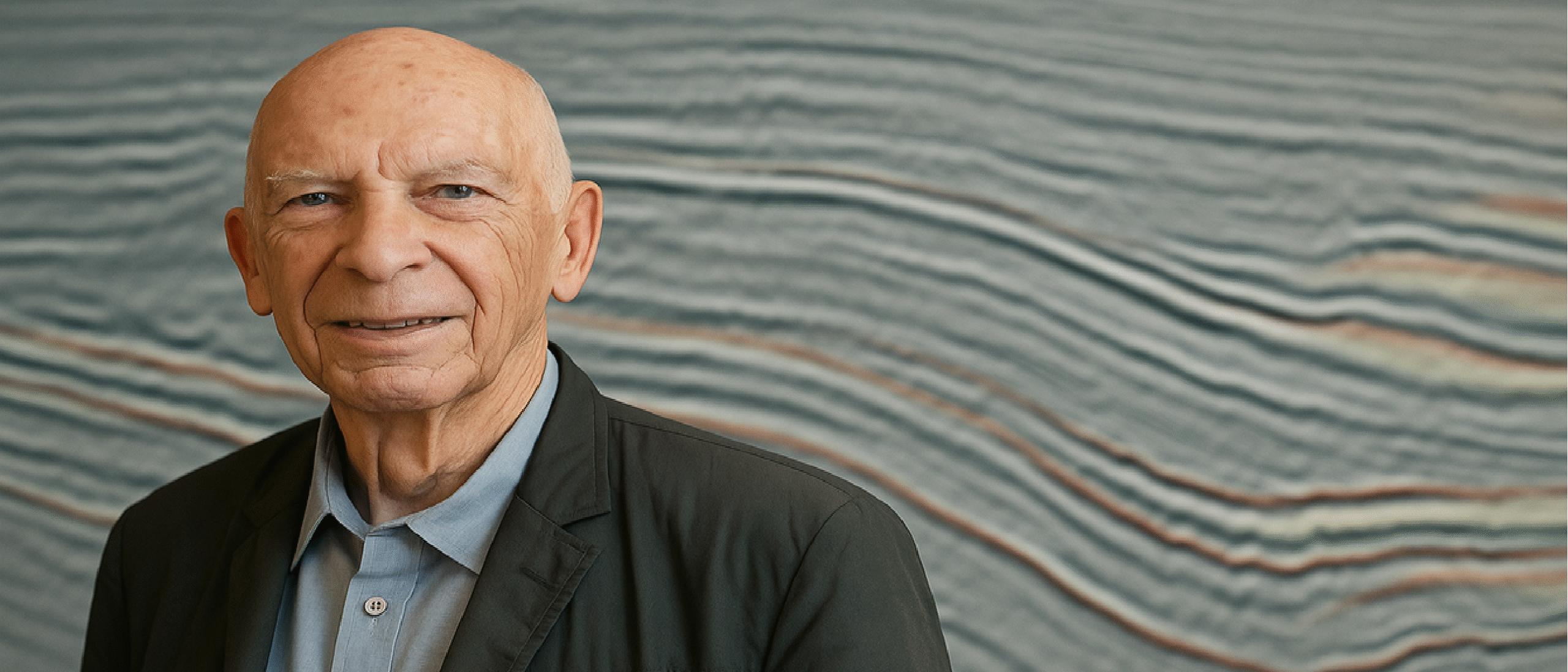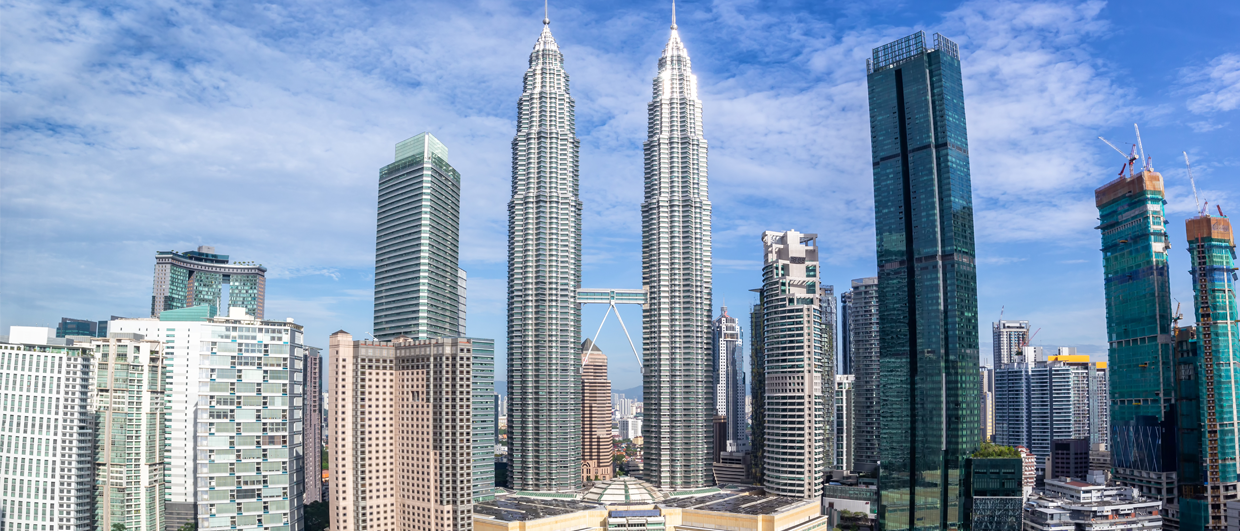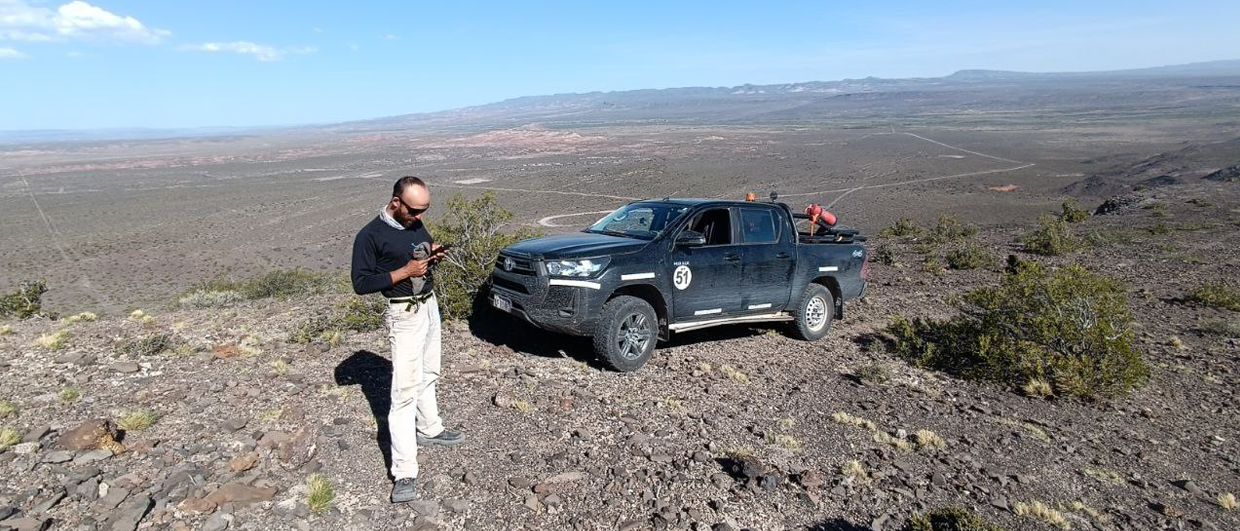In the first article in this series (GEO ExPro Vol. 7, No. 1), we showed that air-gun arrays produce high-energy, low-frequency sound in the form of sharp, short-duration pulses. Key parameters of source signatures are peak-to-peak (P-P) pressure amplitude in bar-m and peak-to-bubble ratio (PBR). The output levels of most seismic arrays tend to be 10-50 bar-m.
Figure 1 shows a seismic vessel with two air-gun arrays towed 365 m behind (measured from the navigation reference point). An example of an air-gun array configuration with 28 active guns in three strings is shown in plan view in Figure 2a. The individual gun volumes in this example range from 20 in3 (0.3 l) to 250 in3 (4.1 l ). The total volume is 3,090 in3 (50.7 l). The array contains a number of ‘cluster guns’, where two guns sit so close together that their air bubbles coalesce after the guns have fired.
Cluster guns produce sound more efficiently than a single large gun with the same volume as the cluster.
The source array dimension is 15 m (inline) x 20 m (cross-line). Inline and cross-line refer to the direction the ship sails and the perpendicular to the sail direction, respectively.
The source signature from the array at 5 m depth is displayed in Figure 2b. Observe that the bubble oscillations are strongly damped. The primary-to-bubble ratio is PBR=35.6. The amplitude spectrum is shown in Figure 2c. The notches at frequencies 0, 150, 300 and 450 Hz are caused by the source ghost. Note that the primary-to-bubble ratio is frequency dependent.
Source directivity
In seismic surveying, air-gun arrays are designed to direct a large proportion of the sound energy downwards. Despite this downward focusing effect of the array, relatively strong sound pulses will propagate in all directions. The radiation from an array will depend on the angle from the vertical, so that the radiated source signature is directional. This effect is called directivity.
Each array has its own specific radiation pattern. This pattern, which will be different for different frequencies, varies relatively slowly from low to high frequencies. The radiation pattern will also be different for different array tow depths.
For the gun array in Figure 2a, source directivity can be modelled. Figure 3 shows the radiation pattern for frequencies 0-150 Hz, in in-line (top) and cross-line (bottom) directions. Vertical direction is 0 degrees. 90 degrees, at the edge of each circle, corresponds to horizontally propagating energy. Observe that the radiation pattern is concentrated downwards, and that the source pulse gets attenuated for angles that differ from the vertical. The amplitude levels emitted horizontally tend to be 18-29 dB lower than the vertical. Note that the sound produced by the array is not distributed evenly across the frequency spectrum.
The amplitude is largest in the 20-100 Hz interval but some energy will be present up to 500-1000 Hz. The high-frequency components are weak when compared to the low-frequency components, but strong when compared to ambient noise levels.
The effect of the water layer and seabottom
 Graphic picture of sound propagation in a water layer over a layered sea bottom. A large part of the sound travels downwards. Sound that hits the sea bottom at an angle greater than the critical angle (?) will be totally reflected. This sound is trapped within the sea layer that then channels or guides the sound. This phenomenon is known as waveguide or normal-mode propagation.The seismic signal from the air-gun array will be affected by the physical properties of the water layer and the sea bottom.
Graphic picture of sound propagation in a water layer over a layered sea bottom. A large part of the sound travels downwards. Sound that hits the sea bottom at an angle greater than the critical angle (?) will be totally reflected. This sound is trapped within the sea layer that then channels or guides the sound. This phenomenon is known as waveguide or normal-mode propagation.The seismic signal from the air-gun array will be affected by the physical properties of the water layer and the sea bottom.
The sound travelling with small to moderate angles to the vertical axis will reflect at and refract into the water bottom. The reflection strength is given by the reflection coefficient for the interface between the water layer and the layered bottom. For small angles, the reflection coefficient is small, typically 0.1, so that most (~90%) of the sound enters the subsurface.
However, sound hitting the sea bottom at angles larger than a critical angle to the vertical, determined by the ratio of sound velocity in water and sea bottom, will be reflected back into the water layer (Figure 4). The water layer, bounded above by the sea surface and below by the water bottom, then forms an acoustic wave guide where the sound propagates with significantly less attenuation than sound in an infinite water pool. The transmission properties of this wave guide depend on the geology of the water bottom and variation of sound velocity with depth and distance.
For a soft sea bottom, the critical angle is typically 60-70 degrees; for a hard sea bottom the critical angle can become 30 degrees. More sound enters the waveguide for hard sea bottoms than soft ones, producing a higher level of sound at large range from the source.
Sound propagation with horizontal distance
 Seismic signal recorded in the water layer a distance 13 km away from a source vessel. The water depth is 70 m. The initial source signal some 10 milliseconds long is much broadened in time since the signal frequencies travel with different velocities. See text for more details.The signals from marine air-gun arrays can be detected in the water column many kilometres away from the seismic vessel, sometimes 100 km and more. The sound levels from air-gun arrays at long horizontal distances from the seismic vessel are determined not only by the acoustic power output but equally important by the local sound transmission conditions.
Seismic signal recorded in the water layer a distance 13 km away from a source vessel. The water depth is 70 m. The initial source signal some 10 milliseconds long is much broadened in time since the signal frequencies travel with different velocities. See text for more details.The signals from marine air-gun arrays can be detected in the water column many kilometres away from the seismic vessel, sometimes 100 km and more. The sound levels from air-gun arrays at long horizontal distances from the seismic vessel are determined not only by the acoustic power output but equally important by the local sound transmission conditions.
In a later GEO ExPro article we will address this effect in more detail. Here (Figure 5), we show the sound recorded 13 km away from an airgun array in water depth of 70 m. The signal has three important features at times T0=7.70 s, T1=8.78 s and T2=9.77 s. These are the arrival times of three ‘wavelets’ travelling with apparent velocities c0=1687 m/s, c1=1480 m/s and c2=1330 m/s, respectively. The low-amplitude, low-frequency wave starting at T0=7.70 s is called the ground wave because it is closely related to the sediment sound velocity. The lowest frequency component arrives first (at T0 with velocity c0), followed by progressively higher frequency components travelling at progressively lower velocities. The highest frequency component of the ground wave arrives at time T2 with velocity c2. The high-amplitude, high-frequency wave which is superimposed on the ground wave at time T1=8.78 s is called thewater wave because it is mainly a function of the water sound velocity. In the water wave, with duration T=1.2 s, higher frequencies travel fastest and arrive before lower frequencies. At time T2 the frequencies of the ground wave and the water wave merge, at which point they form a single wave called the Airy phase.At this abrupt end of the wave train, energy has been transported in the water layer waveguide with the minimum group velocity.
The onset of the water wave is sometimes used in marine refraction work to determine the source-receiver range (since the water speed is well known).
We conclude that with increasing horizontal distance from air-guns, the signal decreases in strength but increases in time duration during guiding of the sound. The initially-short air-gun array signal, some 10 milliseconds in length, can become quite long. In the water wave, higher frequencies arrive before lower frequencies. This geometrical dispersion effect will be sensed as a frequency modulated tone or ‘hooting’ by anyone listening down there in the water column.
 Lasse Amundsen is Chief Scientist Exploration Technology at Statoil. He is adjunct professor at the Norwegian University of Science and Technology (NTNU) and at the University of Houston, Texas.
Lasse Amundsen is Chief Scientist Exploration Technology at Statoil. He is adjunct professor at the Norwegian University of Science and Technology (NTNU) and at the University of Houston, Texas. Martin Landrø is a professor in Applied Geophysics at the Norwegian University of Science and Technology (NTNU), Department of Petroleum Engineering and Applied Geophysics, Trondheim, Norway.
Martin Landrø is a professor in Applied Geophysics at the Norwegian University of Science and Technology (NTNU), Department of Petroleum Engineering and Applied Geophysics, Trondheim, Norway.









